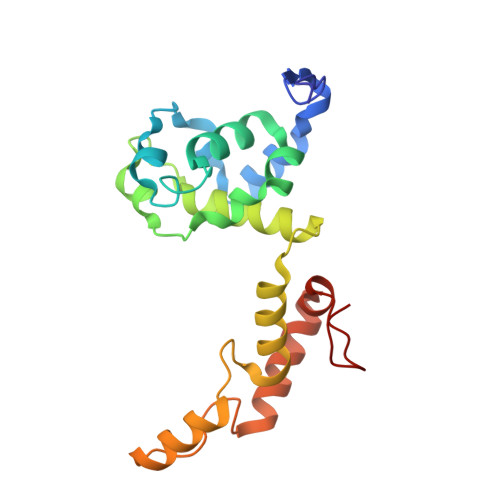Electron flow in hydrogenotrophic methanogens under nickel limitation.
Nomura, S., San Segundo-Acosta, P., Protasov, E., Kaneko, M., Kahnt, J., Murphy, B.J., Shima, S.(2025) Nature 644: 490-496
- PubMed: 40604290
- DOI: https://doi.org/10.1038/s41586-025-09229-y
- Primary Citation of Related Structures:
8RVU, 8RVV, 8RVY, 8RWN - PubMed Abstract:
Methanogenic archaea are the main producers of the potent greenhouse gas methane 1,2 . In the methanogenic pathway from CO 2 and H 2 studied under laboratory conditions, low-potential electrons for CO 2 reduction are generated by a flavin-based electron-bifurcation reaction catalysed by heterodisulfide reductase (Hdr) complexed with the associated [NiFe]-hydrogenase (Mvh) 3-5 . F 420 -reducing [NiFe]-hydrogenase (Frh) provides electrons to the methanogenic pathway through the electron carrier F 420 (ref. 6 ). Here we report that under strictly nickel-limited conditions, in which the nickel concentration is similar to those often observed in natural habitats 7-11 , the production of both [NiFe]-hydrogenases in Methanothermobacter marburgensis is strongly downregulated. The Frh reaction is substituted by a coupled reaction with [Fe]-hydrogenase (Hmd), and the role of Mvh is taken over by F 420 -dependent electron-donating proteins (Elp). Thus, Hmd provides all electrons for the reducing metabolism under these nickel-limited conditions. Biochemical and structural characterization of Elp-Hdr complexes confirms the electronic interaction between Elp and Hdr. The conservation of the genes encoding Elp and Hmd in CO 2 -reducing hydrogenotrophic methanogens suggests that the Hmd system is an alternative pathway for electron flow in CO 2 -reducing hydrogenotrophic methanogens under nickel-limited conditions.
- Microbial Protein Structure Group, Max Planck Institute for Terrestrial Microbiology, Marburg, Germany.
Organizational Affiliation:





















